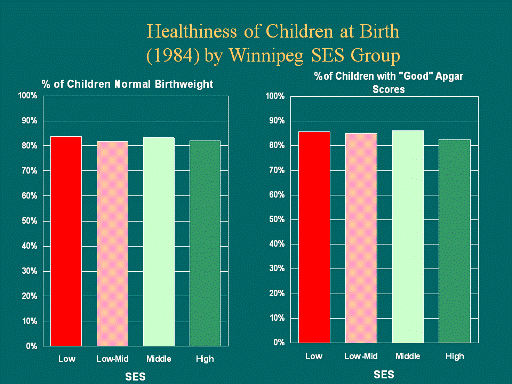| front |1 |2 |3 |4 |5 |6 |7 |8 |9 |10 |11 |12 |13 |14 |15 |16 |17 |18 |19 |20 |review |
 |
We know that children from low SES groups are already behind by the time they begin school, but are these children at a disadvantage right from birth? We know all about the problems of poor nutrition, smoking and inadequate prenatal care facing pregnant women in disadvantaged neighbourhoods. These factors put women at risk of having babies with birth weights that are too low or too high or increased risk of other problems at birth. Babies with low birth weight (under 2,500 grams) are at risk for a number of developmental, cognitive and health problems, and those with high birth weight (over 4,000) grams are at risk for both birth complications and health problems (Perinatal Education Program of Eastern Ontario 1998; Saskatchewan Health 2000). Babies born with low or borderline Apgar scores may also be at risk for health and developmental problems. We looked at both the birth weights and the Apgar scores of our 1984 cohort of children, our 1990 cohort, and a more recent 2003 birth cohort, to see if differences in children from different socioeconomic groups were apparent at birth.
Interestingly, the percentage of children with normal birth weight and with “good” five minute Apgar scores showed remarkably few difference across the four socioeconomic groups. (Because results were similar for all cohorts, the graph reports only the results of children born in 1984.) |